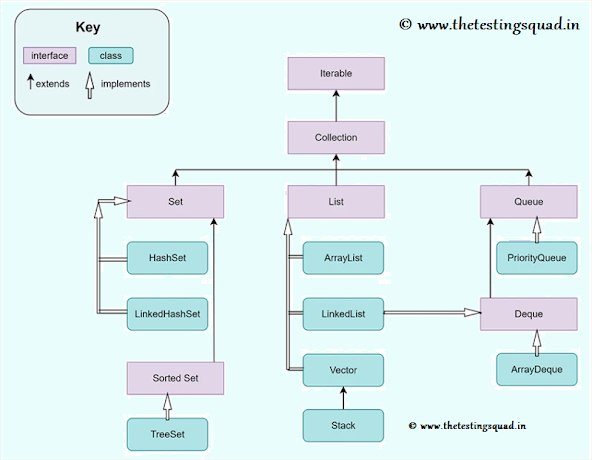In Java, the Collections framework is a set of classes and interfaces that provide various useful methods for working with collections of objects, such as lists, sets, and maps.
The Collections framework is part of the Java standard library and is included in the java.util package.
The key interfaces in the Collections framework are:
Collection: A basic interface that represents a collection of objects. It provides methods for adding and removing elements, checking if an element is present, and so on. Subinterfaces include List, Set, and Queue.
List: A subinterface of Collection that represents an ordered collection of elements. It provides methods for accessing elements by index, and it allows duplicate elements. Examples include ArrayList and LinkedList.
Set: A subinterface of Collection that represents a collection of unique elements. It does not allow duplicate elements. Examples include HashSet and TreeSet.
Map: An interface that represents a collection of key-value pairs. It provides methods for adding, removing, and looking up elements by key. Examples include HashMap and TreeMap.
Queue: A subinterface of Collection that represents a collection of elements in which elements are retrieved in a specific order, usually the order in which they were added. Examples include PriorityQueue and LinkedList.
Deque: A subinterface of Queue that represents a collection of elements in which elements can be inserted or retrieved at both ends. Examples include ArrayDeque and LinkedList.
The Collections framework also provides several utility classes that can be used to perform common operations on collections.
These include:
Collections: A class that provides various static methods for working with collections, such as sorting, searching, and shuffling elements.
Arrays: A class that provides various static methods for working with arrays, such as sorting and searching elements.
Iterable: A base interface for all collections, allowing you to use the for-each loop.
These are the basic interface and classes of java collection framework. The collections framework provides many more classes and interfaces, but these are the most commonly used ones.


Post a Comment